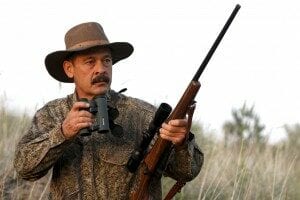LISTEN TO THE PODCAST HERE:
Ron Spomer shares how to know “Everything” Whitetail

Welcome to another episode of Whitetail Rendezvous. This is your host. And ladies and gentlemen, I sure hope you got your ears on and going to listen, because Ron Spomer is joining us today. Ron Spomer shares how to know “Everything” Whitetail. Ron has been in the outdoor industry for many, many years. He has hosted Winchester Legends, Whitetail Revolution, Outdoor’s Ten Best, Hunting 201, Winchester World of Whitetail and now video production, Ron Spomer Outdoors on YouTube. Ron has traveled the globe and brought myself along the trips with him through his writing. So Ron, welcome to the show.
Ron: Thanks, Bruce. I appreciate being here. It’s going to be good talking with you.
Bruce: It sure is and nobody in Colorado is going any place, because we’ve got one heck of a storm still blowing. That’s for sure.
Ron: Yeah, I hear you. You’ve got hammered, but we need that moisture.
Bruce: That’s for sure. So before we get into the show, listeners, Ron has agreed to be with us three or four times a year. So this is going to be a little intro on Ron, about five or so minutes on Ron giving us a background. Then we’re going to get into something that’s near and dear to his heart, and that’s the younger generation. He has a smartphone app called Everything Whitetail that he’s going to talk about. So Ron, let’s kick off the show and let’s share how you got in the business way back where you started out in South Dakota, a farm kid and how you got to where you are today.
Ron: That’s going way back all right. Yeah, I was fortunate to grow up in a small town in America, out in a farm. All my family farmed and that was the world back then. And there really wasn’t much in it for wildlife other than lots and lots of pheasants and waterfowl. East and South Dakota of course, pheasant capital of the world, and we have that glacial potholes country. So even though we farmed it pretty hard — and that was the whole idea back then is to stay alive and make a living on the farm — we still had a lot of potholes, wetlands that were just low sinks that collected all the rainwater and the snow melt. You couldn’t farm it, so that’s where the ducks nested, and then the cattails that grew around there held the pheasants.
You can imagine what that did to a dreaming country boy like me
But it wasn’t until about the mid ’60s that whitetail started to show up. You can imagine what that did to a dreaming country boy like me. I had uncles and cousins who hunted, and I idolized them and I wanted to be a hunter. But I also always had this…I don’t know. It’s almost an instinctive desire to go to the wilderness or the unknown. I would walk the railroad track that ran past the farm and look down it and watch those trains disappear into where I just assumed was some kind of a grand, wild hunting land out there that I just wanted to see. And I don’t know where I got that idea, but I just always had it and it always drove me.
So as I grew up, I kept expanding farther and farther afield, hunting pheasants of course and then waterfowl. We would just walk from the farm or out of town, and maybe make a loop of three miles out and back, and hunt rabbits and pheasants and whatever we could find. But when I bumped into whitetails, my heart just about leaped out of my chest. Holy mackerel! He was this large animal and it had antlers for God’s sake. We’d read about this in Outdoor Life and Sports Afield, and here it was in our own backyard. It was like that grand wilderness I had always imagined had actually come right into the back cornfield. So that really got me going.
Once I got wheels under me at about 15, we could be driving. I was able now to go 10-12 miles out of town and discover more of these big wetlands and wilder areas. That just turned me lose. I became a trapper and an archer, bow-hunting for deer. You name it. If it was out there, it was wild, we were after it. Of course that includes some fishing, too.
And then when I approached adulthood and realized I had to keep myself alive by working for a living, I figured I didn’t want to continue hauling bales, and plowing fields, and shingling barns and things that we were doing then. So I had kind of a knack for writing, and my high school English teacher encouraged me and told me I wrote pretty good stories. And of course that flatters any high school kid. So I applied myself and went to college, got myself a little teaching certificate so I could always teach school. In the summer, I could take off and go fishing. At least I thought it really would be cool if they gave us the fall off as a teacher.
Homer Circle, and Jack O’Connor, and Elmer Keith
So that was sort of fallback plan, but my intent really was to try to be what I really didn’t know much about; an outdoor writer. My model of course was Homer Circle, and Jack O’Connor, and Elmer Keith and all those people who wrote in those hunting magazines that I just pored over every month.
Please subscribe, rate and review each @WhitetailRendez podcast at http://getpodcast.reviews/id/1032967565
